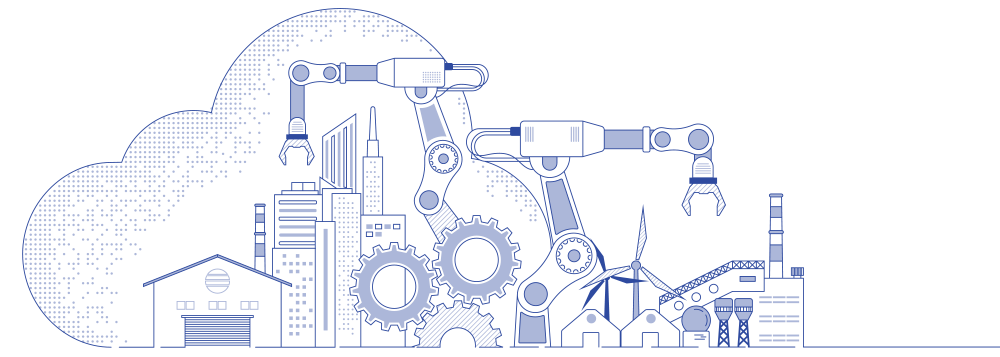
In the rapidly changing world of technology and industry, digitalisation and smart industry play a crucial role in shaping the economy of the future. For the Netherlands, embracing digital transformation and innovation is essential in the pursuit of greater strategic autonomy and strengthening our competitiveness in the global arena.
SMEs, including startups and scale-ups, are a key driver of the Dutch economy and are at the heart of innovation and creativity. To ensure SMEs’ resilience and growth, we need to help them seize the opportunities of digitisation and innovation. But there is also work to be done for big business.
National Technology Strategy
For decades, we almost took it for granted that the Netherlands is a prosperous and resilient country. But with rampant digitalisation and many geopolitical changes in the world, the picture now looks very different. This also has implications for Dutch industrial policy. We cannot be dominant in every industry. So, as a small country, we have to make strategic choices. The launch of The National Technology Strategy (NTS) early this year is a good start.
The NTS’ priority list includes 10 key technologies to be boosted that not only make a major contribution to our country’s earning potential, but are also important for addressing societal challenges and strengthening national security. In doing so, prioritising key technologies helps our country pursue technological leadership in those areas. For Dutch industry, it is good that strategic choices have been made and that, in terms of technology development, there is now clarity about the course to be followed. As TNO, we expect the NTS to give a major boost to the future of industry and Smart Manufacturing in particular.
Indeed, if our manufacturing industry now fully commits to digitalisation, we could already be a major forerunner within Europe in the next decade.
Data & AI
One of the key technologies that will have to be strategically deployed is “Data & AI”, something that requires radical changes and innovation in the throughout the entire manufacturing value chain. Take as an example the future requirements of a digital product passport. The creation of a digital product passport is an important development on the way to a circular economy. It is a tool that allows monitoring the environmental impact and critical raw materials over the entire life cycle of a product. Implementation of this is slowly being forced by European laws and regulations.
For manufacturing companies, this means that they now have to prepare to adequately unlock data in production processes and thus harness the power of AI applications. This can be done by deploying a so-called digital connector to make data interoperable and apply it in a Digital Twin.
The Digital Twin is a crucial element for harnessing the power of existing data from the production process and the end product to value through the use of all kinds of future AI applications. By investing now in a solid framework from which data can be easily accessed, you as a company in the manufacturing industry will be able to quickly integrate new disruptive digitalisation applications. Think of improving your manufacturing throughput and quality with improved planning and utilisation of existing production facilities. Often the insight directly results in improved productivity so that non value-added steps can be quickly improved with the familiar Lean Manufacturing way of working. It also makes it easier to more easily link future operator support systems such as automatically generated work instructions to the existing business automation. This also creates the possibility of sharing the data from the Digital Twin in the value chain from supplier and service provider to the end customer.
Implementing a Digital Twin requires a different way of working. To avoid the usual pitfalls in technology implementation, TNO uses a seven-step model in Digital Twin projects based on three basic questions:
![]()
Why – what is the purpose? What is the scope? And what is already there?
![]()
How – how do we make the technology applicable within our business? How do we get the Digital Twin operational? How do we evaluate, update and improve our Digital Twin?
![]()
What – this is where the real replica is made.

Standardisation
One of the ways to make a Digital Twin accessible to smaller companies is to use (European) standards where larger organisations have defined how a Digital Twin works and what the best way of working is. From Europe, there is increasing attention to Digital Twins so that it is becoming clearer how to link data, simulations and the business process. An example of this is the “ISO standard 23247 – Digital Twin Framework for manufacturing”, which makes a Digital Twin modular and clarifies how components must be linked.
Additionally, from the German Platform Industrie 4.0, there is the “Asset Administration Shell” that describes what information a Digital Twin of a device can contain and where a standard interface is agreed upon that a device should have to universally connect to other devices. Combined with the OMG Digital Twin Consortium’s “Digital Twin Capabilities Periodic Table”, it is then possible to prioritise, create a roadmap, and an overview of the information needed for the purpose. This approach was developed from the EU project Change2Twin in which 30 SMEs in Europe developed a first Digital Twin for their manufacturing company. This provides a structure in which you can properly describe what production data you need, what the result looks like in a dashboard, whether you can capture the behaviour of the device in Machine Learning (AI) or whether you can link the Twin with your factory planning, and you can plot this functionality over time in which the business case can be continuously expanded.
Champions League
In short, Smart Industry and digitalisation in particular is a crucial element in building the future earning capacity of a manufacturing company, large or small. With a pragmatic approach in cooperation between companies and knowledge institutions, we can ensure that the Dutch manufacturing industry can continue to operate at Champions League level in the years to come.
![]()
What is a digital product passport?
A product passport is a digital record in which the composition and other technical data of a product are collected. The addition “digital” thus applies to all references to product passports in this article. The product passport in the working definition develops across the chain, with each link in the chain adding data and information. The passport can be shielded from outsiders.
A raw material (extracted from the earth or recycled) will be an initial product in a product passport. A product passport then builds up over the chain, with several passports together forming a product passport of a composite product further down the chain. A vehicle, prepared meal or building can be seen as a collection of individual products and their individual product passports.
![]()
Digital Twins in practice:
Rheavita
When RheaVita called on TNO for help in developing a Digital Twin, it soon became clear that the company already had a good idea of why this was needed. The freeze-drying equipment it develops and produces is becoming increasingly sophisticated. To take that technology to an even higher level, it had developed a process in which all the water evaporates and only the important material remains. The result is nice and light, and therefore easy to transport. And the material can also be stored for much longer. So there are many advantages, but it is a complicated process that requires many steps and everything has to work correctly to ensure those advantages are achieved.
‘Before creating a prototype, the experts at RheaVita wondered whether they could skip some prototype steps by using a software-based solution,’ says Jeroen Broekhuijsen, Senior Business Consultant Smart Industry at TNO. ‘They envisioned a digital tool that not only controls the machine, but can also indicate the right process settings and recipes for different products. A Digital Twin would lend itself very well to that.
